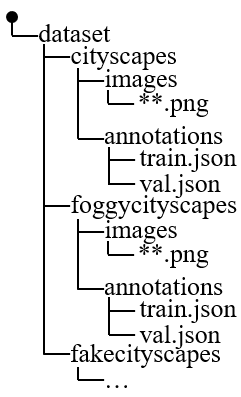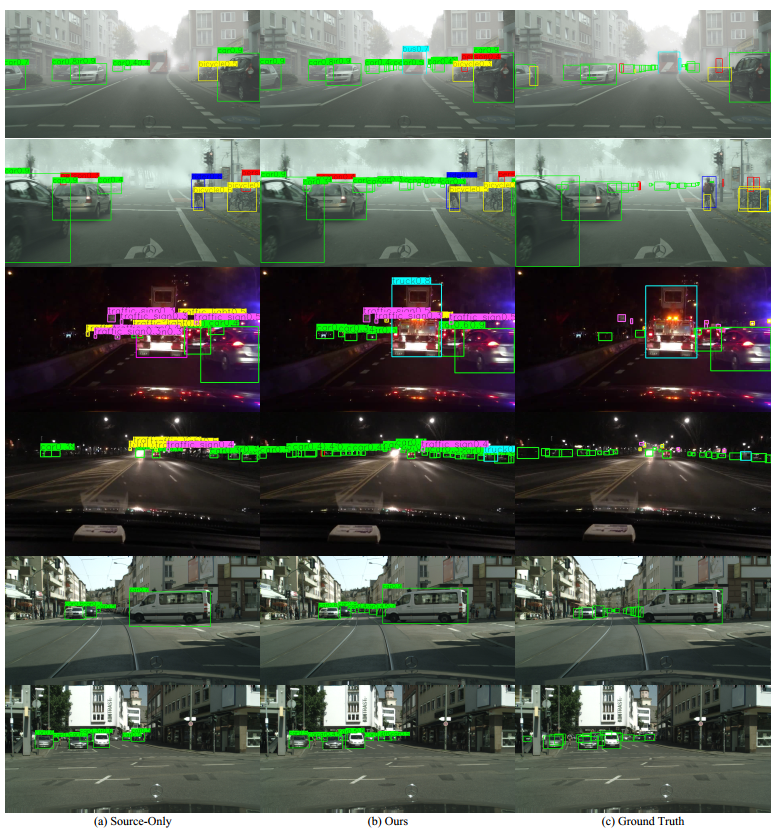Please refer to INSTALL.md for installation instructions.
You can download dataset from: Cityscapes and Foggy Cityscapes、BDD100K、sim10k
After downloading, it needs to be converted into coco dataset format. The folder structure for our experiment should look like this:
The source code used for the CycleGAN model was made publicly available by here.
Below script gives you an example of training a model with pre-trained model.
python main.py ctdet --source_dataset fake_cityscapes --target_dataset foggy_cityscapes --exp_id grl_C2F --batch_size 32 --data_dir /root/dataset/ --load_model ./pre-trained-model/ctdet_coco_dla_2x.pth
Our proposed method is evaluated in domain shift scenarios based on the driving datasets.
You can download the checkpoint and do prediction or evaluation.
python test.py ctdet --exp_id checkout --source_dataset foggy_cityscapes --not_prefetch_test --data_dir /root/dataset/ --load_model ./sda_save.pth
The results show that our method is superior to the state-of-the-art methods and is effective for object detection in domain shift scenarios.
The image detection results can be viewed with the following commands.
python demo.py ctdet --demo ./images --load_model ./sda_save.pth



